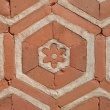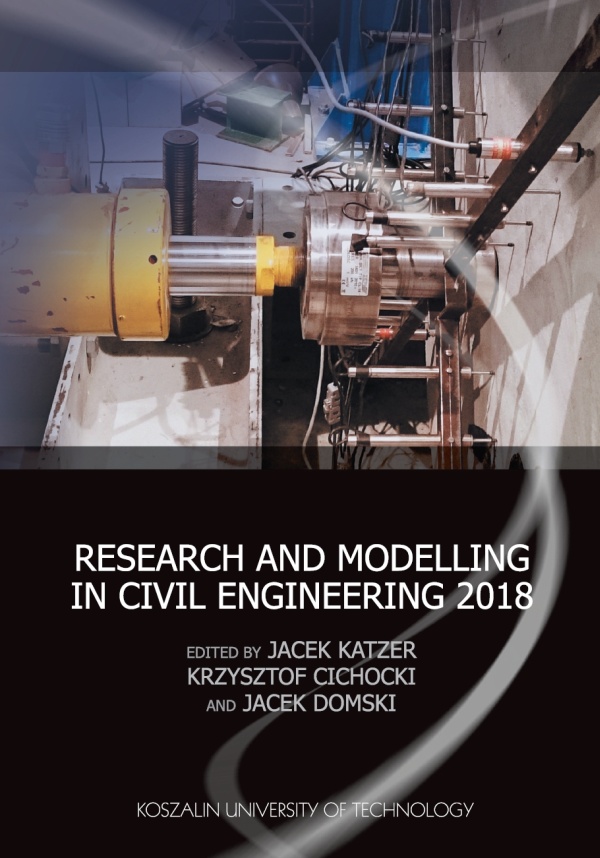Preface
This monograph was created as the scientific outcome of the “3rd Central European Civil Engineering Meeting 2018” (CECEM 2018) which took place at Koszalin University of Technology (Faculty of Civil Engineering, Environmental and Geodetic Sciences) in Poland, 4 – 8 June 2018. Researchers representing five countries (Czech Republic, Slovakia, Spain, Vietnam and Poland) were attending the meeting. The meeting was organized as an ERASMUS+ event. CECEM 2018 had both staff training (STT) and teaching (STA) character and was a great opportunity to share knowledge and experience in the field of civil and structural engineering. The week-long programme included round table discussions, presentations, problem solving cases, lab visits, workshops and social events. The main objectives of CECEM 2018 included peer-learning, networking, transfer of knowledge and sharing research experiences and best practices. Participants brought into the discussion examples from their own institutions and present best practices and innovative approaches to the issues addressed.
The meeting was following the “1st Central European Civil Engineering Meeting 2016” (CECEM 2016) and the “2nd Central European Civil Engineering Meeting 2017” (CECEM 2017). Both meetings took place at Koszalin University of Technology (Faculty of Civil Engineering, Environmental and Geodetic Sciences) in Poland. The 1st CECEM 2016 (21 -23 June 2016) attracted researchers from Czech Republic and Ukraine. The 2nd CECEM 2017 (5 – 9 June 2017) attracted researchers from Czech Republic, Slovakia, Romania and Poland. The success of CECEM 2016 and CECEM 2017 encouraged organizers to organize the 3rd CECEM 2018.
During CECEM 2018 multiple scientific presentations were delivered and discussed. Organizers decided to prepare a monograph as the outcome of the meeting to prevent these high quality presentations from perishing. Willing authors prepared extended versions of their papers for publication. After very careful analyses and peer-review process 14 chapters were accepted for the final version of the monograph. The inclusion of a chapter in the monograph was free of charge for the authors. The peer-reviewing, editing and printing costs were covered by Faculty of Civil Engineering, Environmental and Geodetic Sciences at Koszalin University of Technology.
To embrace the scientific cooperation between attendees of all CECEM meetings an international scientific society “Research and Modelling in Civil Engineering” was established.
The 4th CECEM 2019 will take place in Koszalin (Poland), 3 – 7 June 2019. Colleagues from partner and non-partner institutions are encouraged to take part in the event. Contact person: prof. Jacek Katzer (cecem@cecem.eu). All details concerning the 4th CECEM 2019, previous meetings and an international scientific society “Research and Modelling in Civil Engineering” are available at the meeting website: www.cecem.eu. Free electronic versions of the current monograph and the monograph published after CECEM 2017 are also available there.
Katzer J., Cichocki K., Domski J. (eds.) (2018) Research and Modelling in Civil Engineering 2018.
Koszalin: Koszalin University of Technology Publishing House, Monograph No 355,
Faculty of Civil Engineering, Environmental and Geodetic Sciences.
ISSN 0239-7129, ISBN 978-83-7365-502-7
(Monograph – Full text)
Table of contents (Chapters)
- Relationship between mechanical properties and conductivity of SCC mixtures with steel fibres – pp. 7-18
Petr Konečný, Petr Lehner, Tomasz Ponikiewski - Quantitative comparison between visual and UAV-based inspections for the assessment of the technical condition of building facades – pp. 19-29
Carles Serrat, Vicenç Gibert, Anna Cellmer, Anna Banaszek - Choice of optimal material solutions for the assessment of heat and humidity states of outer walls made using the technology of light steel framing – pp. 31-43
Maciej Major, Izabela Major, Mariusz Kosiń - Behaviour of high performance concrete in mixed mode loadings: experiments and numerical simulation – pp. 45-61
Stanislav Seitl, Petr Miarka, Vlastimil Bílek, Wouter De Corte - Performance and optimization of prestressed beam with respect to shape dimensions – pp. 63-85
Tuan Duc Le, Pavlína Matečková, Petr Konečný - Plate strip in a stabilized temperature field and creep effect – pp. 87-111
Katarína Tvrdá - Harnessing digital image correlation system for assessing flexural characteristics of SFRC based on waste ceramic aggregate – pp. 113-127
Jacek Katzer, Jacek Domski - An experimental analysis of the determination of the elastic modulus of cementitious materials – pp. 129-147
Dalibor Kocáb, Barbara Kucharczyková, Romana Halamová - X-ray investigation of steel fibres in high performance self-compacting concrete beams – pp. 149-169
Tomasz Ponikiewski - Binary alkali-activated materials with brick powder – pp. 171-185
Cecílie Mizerová, Pavel Rovnaník - Numerical analysis of the temperature distribution in an office room – pp. 187-198
Maciej Major, Izabela Major, Jarosław Kalinowski, Mariusz Kosiń - Generalized maximum tangential stress criterion in double cantilever beam specimens: choice of the proper critical distance – pp. 199-211
Lucie Malíková, Hana Šimonová - Comparison of pulse-echo-methods for testing of heat degradation concrete – pp. 213-236
Libor Topolář, Richard Dvořák, Michaela Hoduláková, Luboš Pazdera - Fundamental formulae for the calculation of shear flexible rod structures and some applications – pp. 237-259
Mariusz Ruchwa


